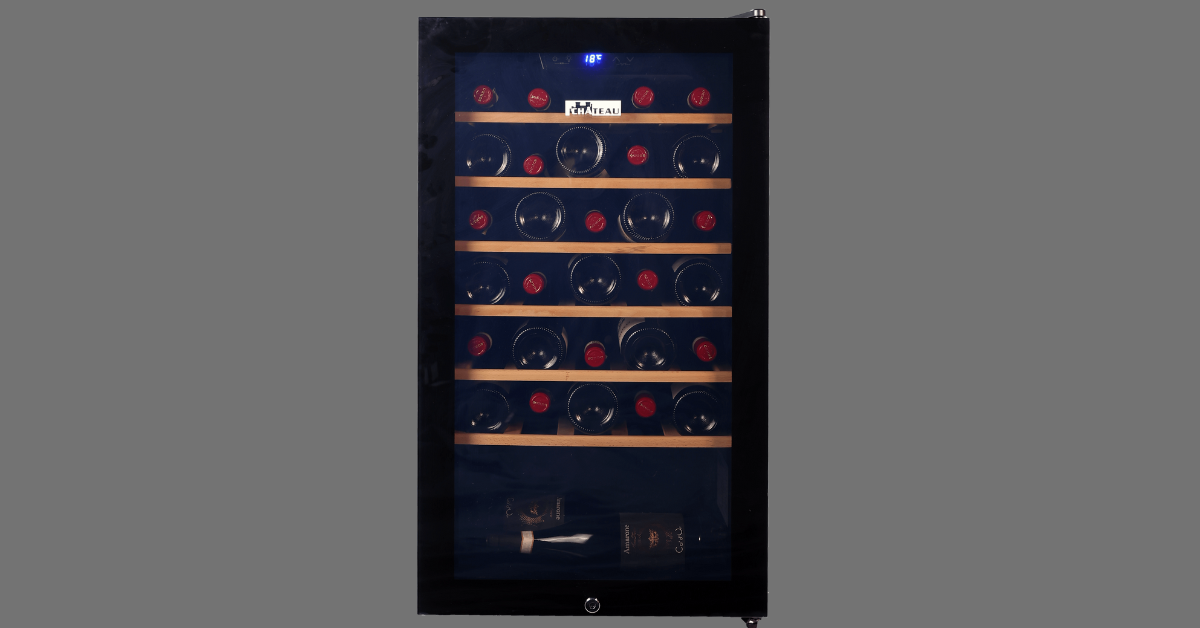Wine Fridge: The Perfect Solution for Everyday Wine Storage
Wine is more than a beverage — it’s a sensory experience that combines taste, aroma, and tradition. But to enjoy wine at its finest, it must be stored properly. That’s where the Wine Fridge comes in. Designed to keep your wine at the perfect temperature, a wine fridge (also known as a wine cooler) is an essential appliance for casual drinkers and serious collectors alike.
Whether you’re storing a few bottles for your next dinner party or maintaining a growing collection, a wine fridge offers the convenience and control you need. In this guide, we’ll explore everything about wine fridges — what they are, how they work, why they’re important, and how to choose the right one for your space.
What Is a Wine Fridge?
A wine fridge is a temperature-controlled appliance designed specifically for storing wine. Unlike a standard refrigerator, which is too cold and too dry, a wine fridge maintains optimal conditions to preserve wine’s flavor, aroma, and structure.
Wine fridges come in various sizes and configurations, from compact countertop units to larger, freestanding or built-in models. They’re ideal for keeping wine ready to drink while protecting it from heat, light, vibration, and humidity.
Why Use a Wine Fridge?
1. Optimal Storage Temperature
Wine needs to be stored between 12°C and 18°C to maintain its integrity. Standard fridges are typically set around 2°C to 5°C, which can spoil wine over time. A wine fridge keeps bottles at the ideal temperature, whether you prefer red, white, or sparkling wine.
2. Protects Against Environmental Damage
Wine is sensitive to temperature fluctuations, UV light, and vibration. A wine fridge is designed to minimize all of these factors:
-
UV-resistant glass doors
-
Anti-vibration systems
-
Humidity control
3. Convenient and Accessible
Wine fridges allow you to store your wine collection in the kitchen, dining room, or bar area — making it easy to grab a bottle at the perfect moment.
4. Stylish and Space-Efficient
Modern wine fridges feature sleek designs that fit seamlessly into home or commercial interiors. Whether it’s a freestanding showpiece or a built-in under-counter model, a wine fridge adds elegance to your space.
Types of Wine Fridges
Single-Zone Wine Fridge
Maintains one consistent temperature throughout. Best for those who store only one type of wine (e.g., all reds or all whites).
Ideal for:
-
Beginners
-
Smaller collections
-
Everyday drinkers
Dual-Zone Wine Fridge
Has two separate temperature zones. Store red and white wines at their ideal temperatures in one appliance.
Ideal for:
-
Mixed wine collections
-
Entertainers and couples with different preferences
-
Wine enthusiasts
Built-In Wine Fridge
Designed to be installed within cabinetry or under countertops, with front ventilation.
Ideal for:
-
Modern kitchens
-
Home bars
-
Integrated, seamless looks
Freestanding Wine Fridge
Can be placed anywhere with sufficient airflow. Offers flexibility and is often available in a wider range of sizes.
Ideal for:
-
Apartments and condos
-
Living and dining areas
-
Renters or those who move frequently
Wine Fridge Sizes and Capacities
Wine fridges are available in various sizes, measured by bottle capacity:
| Fridge Type | Bottle Capacity | Best For |
|---|---|---|
| Compact | 6–20 bottles | Small homes, casual drinkers |
| Medium | 20–50 bottles | Growing collections, entertainers |
| Large | 50+ bottles | Collectors, wine professionals |
Keep in mind that actual capacity may vary depending on the shape and size of your wine bottles.
Key Features to Look For in a Wine Fridge
Temperature Range
A good wine fridge should offer a range from 5°C to 20°C. Dual-zone models should allow independent control of each compartment.
Digital Controls
Touch panels and digital displays make it easier to monitor and adjust the internal temperature.
UV-Resistant Glass Door
Protects wine from harmful light while offering visibility. Tinted or double-glazed doors are best.
Vibration Dampening
Prevents disruption of sediment and protects delicate aging processes.
Removable Shelving
Allows flexibility to store larger bottles like Champagne or magnums.
Humidity Control
Maintains ideal relative humidity levels (50%–70%) to preserve cork integrity and prevent mold.
LED Lighting
Soft lighting makes it easy to find bottles and adds a luxurious touch without generating heat.
Where Should You Place Your Wine Fridge?
Kitchen
For home cooks and entertainers, the kitchen is a popular spot for easy access during meal prep or hosting.
Dining Room
Perfect for quick pairings during meals and formal gatherings.
Living Room or Bar Area
Showcase your collection while enjoying wine with guests.
Bedroom or Study
For personal use, a small fridge can be placed in a private space for end-of-day relaxation.
Wine Fridge vs Wine Cellar: What’s the Difference?
| Feature | Wine Fridge | Wine Cellar |
|---|---|---|
| Size | Compact to medium | Medium to large rooms |
| Installation | Freestanding or built-in | Permanent, structural |
| Temperature Control | Basic to advanced | Precise and complex |
| Storage Duration | Short to medium-term | Long-term aging |
| Portability | Portable | Fixed |
| Cost | Lower upfront cost | High investment |
A wine fridge is ideal for everyday use, while a wine cellar is better suited for serious aging and large collections.
Tips for Choosing the Right Wine Fridge
-
Assess Your Collection Size
Buy a unit with 20–30% more capacity than your current needs to allow for growth. -
Measure Your Space
Check height, width, and depth — including clearance for ventilation. -
Think About Design
Choose a finish that matches your interior: stainless steel, black, wood-trimmed, etc. -
Check for Warranty and Support
Reputable brands offer solid warranties and after-sales service. -
Read Reviews and Specifications
Ensure the unit has good energy ratings, customer feedback, and essential features.
Maintaining Your Wine Fridge
To ensure your wine fridge continues to perform:
-
Clean the interior regularly using a soft cloth and mild soap.
-
Vacuum air vents and condenser coils every 6 months.
-
Check door seals to ensure no air leaks.
-
Keep it level to reduce vibrations and compressor noise.
-
Avoid overcrowding; leave space for air to circulate.
FAQs: Wine Fridge
Can I store other beverages in a wine fridge?
Yes, but wine fridges are designed for specific temperature and humidity ranges ideal for wine. If storing beer, soft drinks, or water, use caution with temperature settings.
What temperature should a wine fridge be set to?
-
Red wine: 12°C – 18°C
-
White wine: 7°C – 12°C
-
Sparkling wine: 5°C – 10°C
For dual-zone models, set one compartment for red and the other for white or sparkling.
Do wine fridges use a lot of electricity?
Most wine fridges are energy-efficient, especially thermoelectric models. Check the energy rating before purchasing.
How long can wine stay in a wine fridge?
Wine can be stored for months or even years, depending on the fridge and the wine type. However, wine fridges are typically for short- to medium-term storage.
Do I need a dual-zone fridge?
If you regularly drink both red and white wines, a dual-zone model is ideal. If not, a single-zone fridge should suffice.
Can I install a freestanding wine fridge under the counter?
No — freestanding models require airflow around them. If you need an under-counter unit, choose a built-in wine fridge with front ventilation.
Final Thoughts
A wine fridge is a smart investment for anyone who enjoys wine. It enhances your lifestyle by keeping your bottles in optimal condition, ready to serve at any time. Whether you prefer compact convenience or a dual-zone showpiece, there’s a wine fridge to fit your space, style, and budget.
At Chateau Wine Cooler, we help wine enthusiasts find the perfect storage solution to match their needs. From small wine fridges to advanced dual-zone units, every product is designed to bring sophistication and precision to your wine experience.
Ready to elevate how you store and serve your wine? A wine fridge is the perfect place to start.







